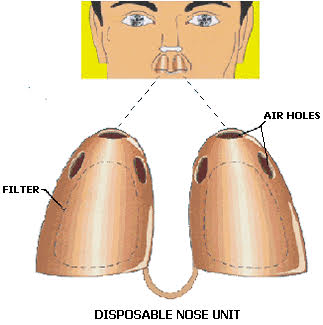
Water | Swimming Pools
Manatee Bags
 One simple bag for produce shopping and storage. Made from organic cotton and sustainable dyes. French seams, Machine washable.
One simple bag for produce shopping and storage. Made from organic cotton and sustainable dyes. French seams, Machine washable.
WaterCheck
 A variety of water test kits for both city and well water. Just choose your kit, send in a water sample, and get your results. NOTE: While it’s always a good idea to know what’s in your water, remember than water tests only show what’s in your water at the moment, and not over time. Because water quality can change, it’s always a good idea to filter your water for a wide spectrum of possible contaminants.
A variety of water test kits for both city and well water. Just choose your kit, send in a water sample, and get your results. NOTE: While it’s always a good idea to know what’s in your water, remember than water tests only show what’s in your water at the moment, and not over time. Because water quality can change, it’s always a good idea to filter your water for a wide spectrum of possible contaminants.
Are Squishies Toxic?

Question from Adrian
Hi Debra,
I was just wondering how safe you think the new kids craze of squishies are? My children really love them! I worked with polyurethane for years and wore air fed respirators but still have sensitivity to it. I can smell the isocyanate in the toys and it gives me an instant headache. What are your thoughts?
Debra’s Answer
Children should NOT be playing with squishes!
It’s interesting that you say you can smell the isocyanate. It’s supposed to completely react and not emit. I’ll look into this more. So just because of that I would say no.
But in addition I see they are SCENTED. So that would be another reason not to play with them or even have them in the house as a decoration.
Tobys Nose Filters
 Question from Bonnie Johnson
Question from Bonnie Johnson
Hi Debra,
I was wondering if anyone had tried Toby’s nose filters. I have to use a mask when I go outside because of pollen etc and they are supposed to block it. Kind of like an air purifier in your nose. Debra have you looked at them? Wondering how toxic they are. Thanks
Debra’s Answer
I have no experience with this product. Readers, has anyone used them?
Their website states:
The nose units (and clip) are made of a soft, surgical-grade C-Flex plastic (SDS).
Their white basic particulate filter is made of cellulose and polyester.
Their “dual” white and black filter is made of activated carbon with a polyester backing, which does everything the white filter does, but it’s also effective in reducing odors.
They seem fine to me as far as materials go. I don’t know anything about their effectiveness.
Kid’s Wagon

Question from Kristen
Hi Debra,
I am looking for a child’s wagon. There are softer foldable ones that seem toxic, but I am worried about glues/ paint/ finishes on wooden and metal wagons. One review for a wooden wagon said “you could smell it through the box.” Do you have any recommendations?
Debra’s Answer
Debra’s Answer:
Wagons come with all kinds of things these days that just add toxic materials.
Just get a plain old-fashioned Radio Flyer Classic Red Wagon or similar wagon that is all metal with a baked-on finished.
The only problem with this wagon may be the rubber tires on the wheels, but there is no getting around that. These should outgas fairly soon.
Nontoxic Car Seat Covers
Question from Suzie
Hi Debra,
We purchased conversion van yr 2013 Have had the carpets steam cleaned without any fragrances in the van but still smelling some will try the non-toxic in Vairo clean over top…
However the seats are leather and of course treated… I haven’t even been able to ride in the van since we purchased it two years ago. We used sheepskin seat covers and our last fan to help hide the smell of the seats and had to wash them many times to get some of the odor Our. Any recommendations for nontoxic car seat sea covers ?
Appreciate any input thank you!
Debra’s Answer
Yes, actually.
I would make custom seat covers. And these are not as difficult as it sounds.
In fact, when I had my Fiat X 1/9 I took it to a auto upholsterer and had them make new custom seat covers from the cotton canvas I provided. And they were great.
But you could also have an auto upholsterer make COVERS for your seats that you would put over the existing covers.
Plain cotton canvas won’t block outgassing.
But you could put a layer of foil-backed polyethylene plastic that would block, or a layer of carbon felt that would adsorb emissions from the car interior.
Fiesta Dinnerware
 This brightly colored iconic dinnerware is free from lead and some colors are also free from cadmium. Here’s the list of cadmium-free colors (both retired and current): shamrock, chocolate, peacock, turquoise, cinnabar, plum, black, white, heather, lapis, sage, slate, cobalt, claret, mulberry. Statement from the manufacturer about being lead-free.
This brightly colored iconic dinnerware is free from lead and some colors are also free from cadmium. Here’s the list of cadmium-free colors (both retired and current): shamrock, chocolate, peacock, turquoise, cinnabar, plum, black, white, heather, lapis, sage, slate, cobalt, claret, mulberry. Statement from the manufacturer about being lead-free.
Cacoco Drinking Chocolate
 I found this chocolate at my local farmer’s market. It’s different from any other I’ve seen because it’s WHOLE chocolate made from heirloom cacao grown in healthy soil. Virtually all other chocolate is processed and separated and then mixed together again. This chocolate takes the whole cacao beans as they are and grinds them, then “rather than the standard processed cocoa powder, cane sugar, and milk, we add all organic superfood herbs and spices [plus a bit of coconut sugar and Himalayan salt] to our fair trade chocolate blends for an amazing vitality elixir with anti-oxidants, minerals, and essential fatty acids, as well as a pharmacopeia of bliss inducing compounds that are most present in heirloom cacao varietals from healthy soil… CACOCO is the purest form of cacao directly sourced from beyond-organic farms, that not only improve the health of the environment but produce a chocolate that showcases the finer nuances of well maintained soil and cultivation and highlight the terroir of the region…We currently source all of our heirloom cacao from organic and regenerative farms in Ecuador. CACOCO is currently working in tandem with Terra Genesis International (TGI)* to build a regenerative network of businesses committed to rebuilding supply chains based on regenerative principles.” I tasted them all at the farmer’s market and liked the 80% Extra Dark best. This is not a powder, it’s more like a crumble that needs to be well-mixed.
I found this chocolate at my local farmer’s market. It’s different from any other I’ve seen because it’s WHOLE chocolate made from heirloom cacao grown in healthy soil. Virtually all other chocolate is processed and separated and then mixed together again. This chocolate takes the whole cacao beans as they are and grinds them, then “rather than the standard processed cocoa powder, cane sugar, and milk, we add all organic superfood herbs and spices [plus a bit of coconut sugar and Himalayan salt] to our fair trade chocolate blends for an amazing vitality elixir with anti-oxidants, minerals, and essential fatty acids, as well as a pharmacopeia of bliss inducing compounds that are most present in heirloom cacao varietals from healthy soil… CACOCO is the purest form of cacao directly sourced from beyond-organic farms, that not only improve the health of the environment but produce a chocolate that showcases the finer nuances of well maintained soil and cultivation and highlight the terroir of the region…We currently source all of our heirloom cacao from organic and regenerative farms in Ecuador. CACOCO is currently working in tandem with Terra Genesis International (TGI)* to build a regenerative network of businesses committed to rebuilding supply chains based on regenerative principles.” I tasted them all at the farmer’s market and liked the 80% Extra Dark best. This is not a powder, it’s more like a crumble that needs to be well-mixed.
Mayo Clinic Healthy Living Study Doesn’t Mention Toxics

Question from Regina
Hi Debra,
Just wanted to send you this article about a new study from the Mayo Clinic. They found that less than 3 percent of Americans meet the basic qualifications for a “healthy lifestyle.”
The authors of the study defined a “healthy lifestyle” as one that met these four qualifications:
- Moderate or vigorous exercise for at least 150 minutes a week
- A diet score in the top 40 percent on the Healthy Eating Index
- A body fat percentage under 20 percent (for men) or 30 percent (for women)
- Not smoking
No mention of toxic exposures as a factor of health.
You’ve done extraordinary work that’s helped so many of us. And we still have a long way to go in reaching the masses.
THE ATLANTIC: Less Than 3 Percent of Americans Live a ‘Healthy Lifestyle’
Debra’s Answer
Yes, diet and exercise are the major keystones for what is considered a “healthy lifestyle.”
The problem is, you could follow the standard guidelines for food and exercise all you want and still not be healthy if you are not eliminating toxic chemicals from your home and work environment.
Eating the proper number of servings of foods with pesticides is not going to create health, and neither is exercising 150 minutes a week in a toxic gym.
Yes, we do need to exercise, outdoors in clean air.
Yes we do need to eat whole organic foods.
We do need to control body fat.
And we need to not smoke.
But there is so much more to a healthy lifestyle. And so many more people who need to be reached.
The Indoor Generation
The other day a powerful video arrived in my inbox that I want to share with you.
This exceptionally well-done video makes a touching and powerful case for the problems of indoor air quality and how it affects health, yet does not address cleaning up toxics in the home environment at all.
Granted it was made by Velux, a manufacturer of skylights and roof windows. They are promoting the use of openable skylights and roof windows as the solution to get more light indoors and provide ventilation to eliminate the toxic build-up indoors.
How great it would be if they had used this opportunity to give a really good resource list for solving indoor air quality through source reduction. They do give some links on their resource page, but only to energy and green building organizations, that typically don’t address toxics, yet their opening statement is “Indoor air can be five times more polluted than outside air.”
Despite the omission of reducing toxics at the source, it’s encouraging to see that a major mainstream company like Velux is using indoor air pollution as a problem to draw the general public into using their products as a solution. This is an indicator that indoor air quality is being recognized as a problem that the public in general know about and are concerned about. I’m fairly certain they would not have invested the resources into this campaign without doing market research to verify the general public would respond. So this is a very good indicator of awareness of toxics issues moving into the mainstream.
And it’s always good to have anyone and everyone promoting the issue. This video is so well done it should inspire people to be concerned about indoor air quality and seek more information. Hopefully it will be well-distributed.
Thanks, Velux, for making this.






